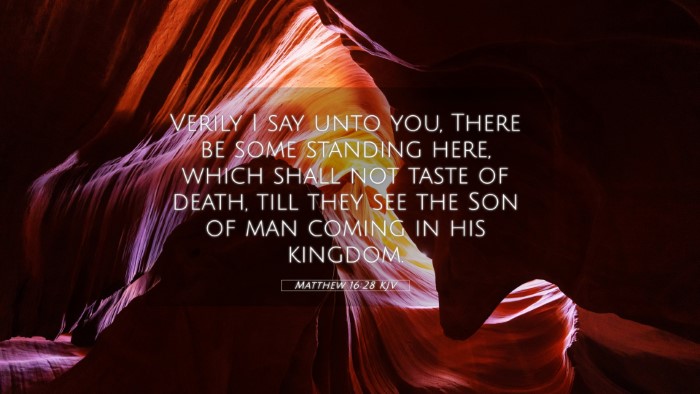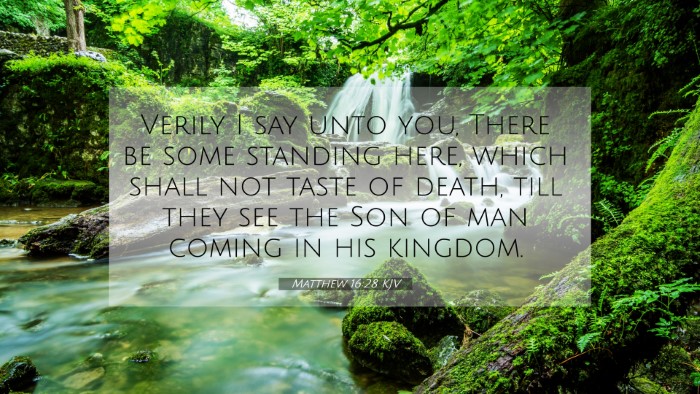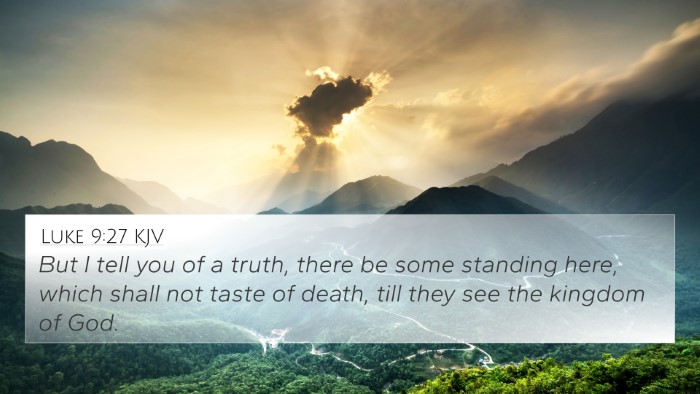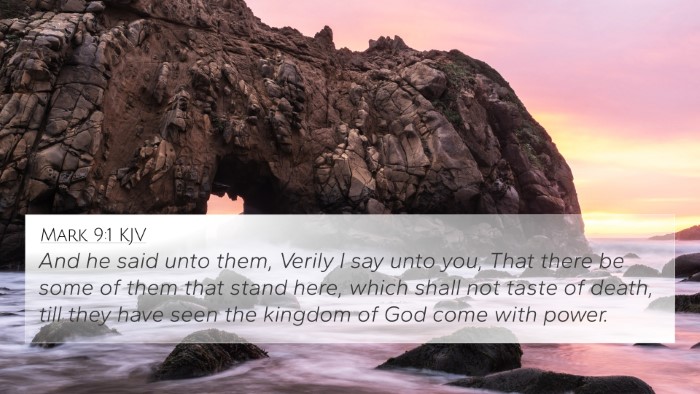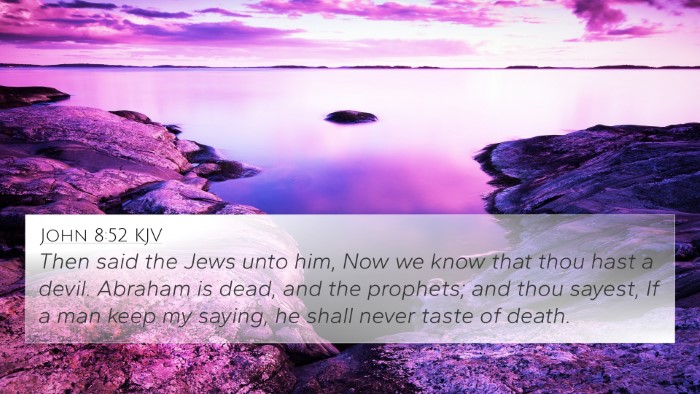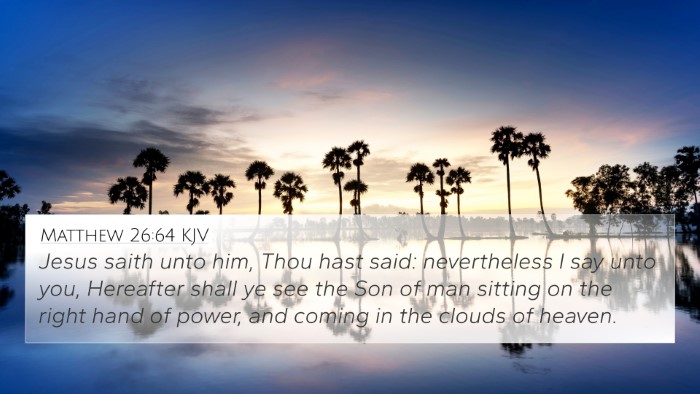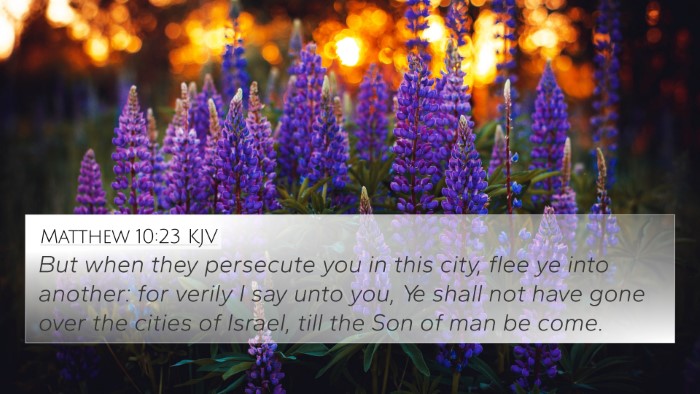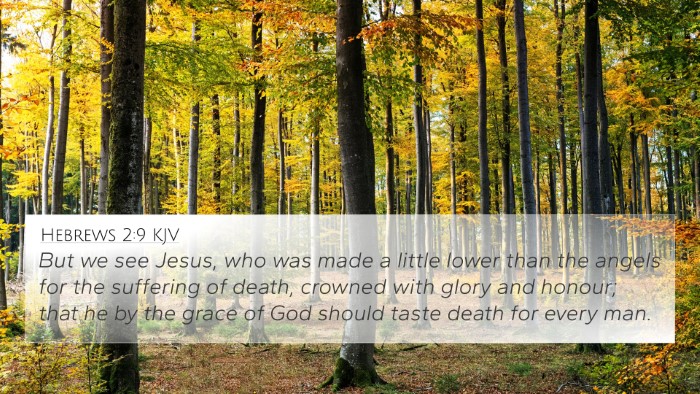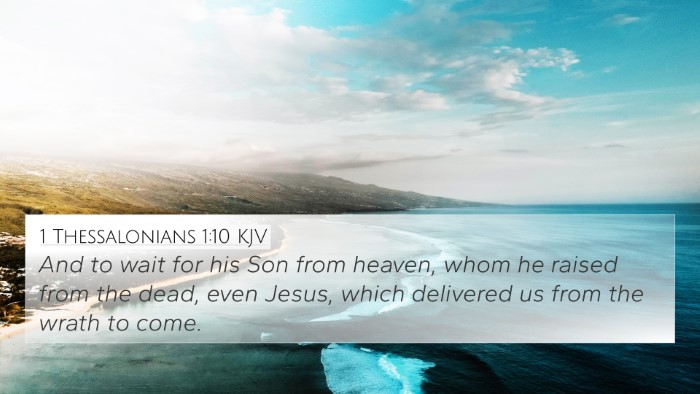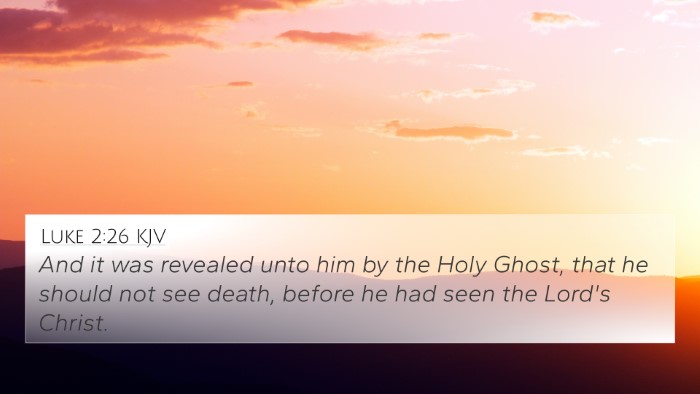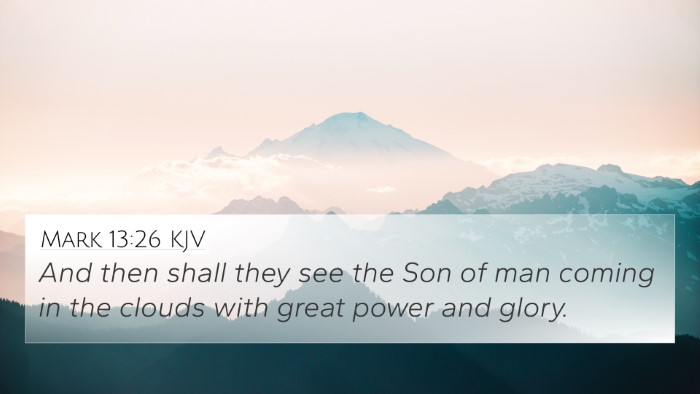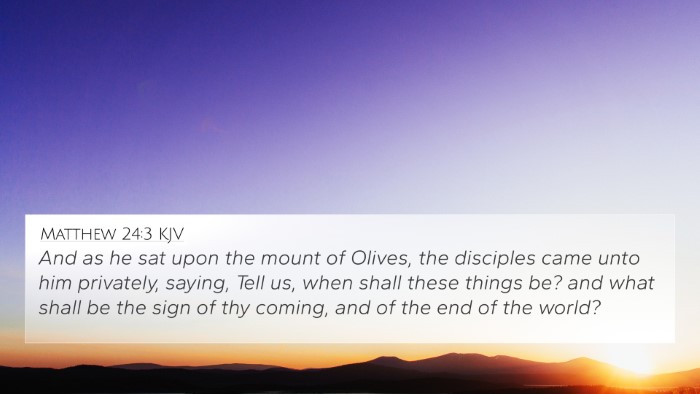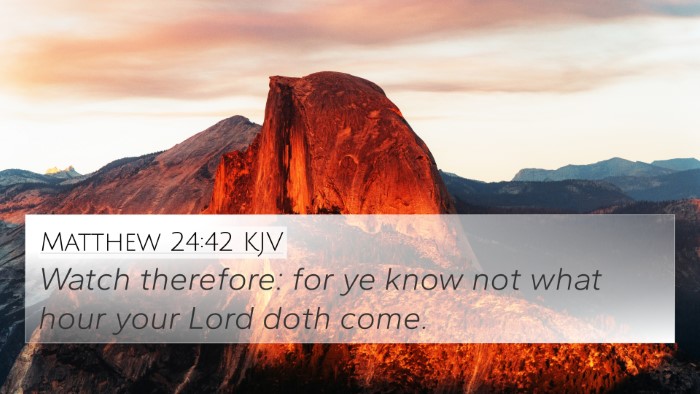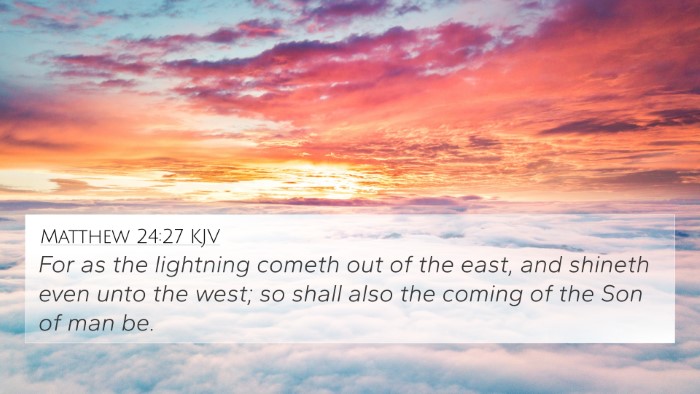Understanding Matthew 16:28
Bible Verse: “Verily I say unto you, There be some standing here, which shall not taste of death, till they see the Son of man coming in his kingdom.”
Summary of Meaning
Matthew 16:28 is a profound statement by Jesus that speaks to the imminent revelation of His glory and the establishment of His kingdom. This verse serves as a bridge to the following events in the narrative, particularly the Transfiguration. Various commentators provide insights into the implications of this passage regarding the nature of the Kingdom of God, the expectation of the disciples, and its eschatological significance.
Commentary Insights
-
Matthew Henry:
Henry suggests that this verse is a promise to the disciples that some among them would witness a glimpse of Christ's majesty before their physical death. He emphasizes that this revelation would come through divine manifestations, such as the Transfiguration, which underscores the glory associated with Christ's person and His kingdom.
-
Albert Barnes:
Barnes notes that the phrase "till they see..." indicates a transformation that the disciples would experience, hinting at the spiritual insight and understanding they would gain. He points out that the "coming of the Son of man" refers not only to Christ's resurrection and ascension but also to the eventual establishment of His reign at the end of the age.
-
Adam Clarke:
Clarke elaborates on the dual aspects of Christ's kingdom—its present spiritual reign within believers and its future physical manifestation. He ties the verse's meaning to the assurance that some disciples would encounter profound revelations of Christ's glory, providing them with evangelical motivation to continue their ministry.
Connecting to Other Scriptures
This verse has several connections to other biblical texts, which can help deepen understanding through thematic and scriptural cross-referencing:
- 1. Matthew 17:1-3: The Transfiguration, where Peter, James, and John see Jesus in His divine glory.
- 2. Luke 9:27: Similar to Matthew 16:28, it alludes to some disciples witnessing the Kingdom of God.
- 3. John 21:22: Jesus speaks of John's future, suggesting an ongoing witness of His glory until His return.
- 4. Revelation 1:7: The second coming of Christ, which ties to the expectation set in this Matthew verse.
- 5. Romans 8:19: The creation eagerly waiting for the revealing of the sons of God, indicating an eschatological hope.
- 6. 2 Peter 1:16: Peter emphasizes his eyewitness experience of Christ's majesty, linking back to the promise of Matthew 16:28.
- 7. Acts 1:11: Refers to the return of Christ, which relates to the 'coming in His kingdom' mentioned here.
- 8. Matthew 25:31: A depiction of the coming of the Son of Man in His glory with His angels, relating to the expectation of the kingdom.
- 9. Titus 2:13: The hope of the glorious appearing of Jesus Christ links to the anticipated coming referenced in this verse.
- 10. 1 John 3:2: Recognition of our future transformation at Christ's return, echoing the themes in Matthew 16:28.
Thematic Connections
The verse speaks to broader themes in Scripture, including the anticipation of Christ's return, the embodiment of His kingdom within the church, and the glimpses of divine glory experienced by believers. This includes:
- Faith and Expectation: The assurance that believers would see manifestations of Christ's power and majesty strengthens the faith of the disciples and future followers.
- Spiritual Revelation: Emphasizing the dual nature of Jesus' kingship as both present and future encourages believers to look for God’s activity in their lives.
- Eschatological Hope: Encouraging an understanding of the end times related to Christ's coming reign serves to motivate ethical living and discipleship.
Applications in Bible Study
For those engaging in Bible cross-reference study, Matthew 16:28 illustrates how thematic connections and parallels among scriptures can enhance comprehension. Employing tools such as:
- Bible concordance
- Bible cross-reference guide
- Cross-reference Bible study methods
- Bible reference resources
- Bible chain references
These tools can help uncover deeper meanings and contexts behind verses, such as connecting the eschatological implications of Matthew 16:28 with similar references throughout the Bible.
Conclusion
Matthew 16:28 encompasses profound theological implications regarding the nature of God's kingdom and the expectations set before the disciples. Engaging with this verse through comprehensive Bible cross-reference materials not only enhances understanding but provides a cohesive framework for theological reflection and personal application. By recognizing the inter-Biblical dialogue, believers can explore the rich tapestry of scripture that leads toward a greater appreciation of Christ's majesty and the eschatological hope that inspires the Christian faith.

